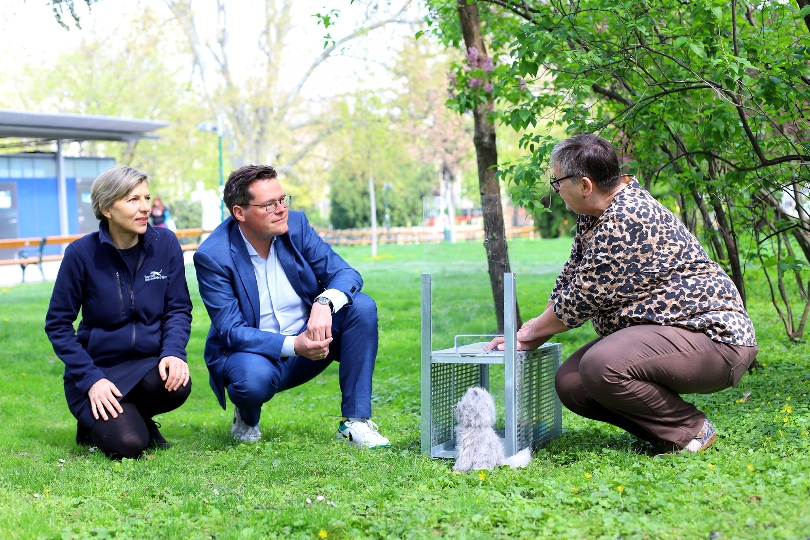–
They roam in parks, allotment gardens and former company premises and live in colonies – Vienna’s stray cats. The stray velvet paws are descendants of runaway or abandoned house cats and live in peaceful coexistence with the two-legged townspeople. Because many residents provide the cats with food. The city of Vienna’s stray cat project ensures that the cat population remains under control.
control
As part of the stray cat project, the stray cats are caught in special cages, neutered and released back to their original place. Without this measure, an unbelievable 12,000 offspring could be produced from a single pair of cats within five years.
Animal Welfare City Councilor Jürgen Czernohorszky and Animal Welfare Ombudswoman Eva Persy are supporting the project with ten new custom-made traps. “Around 3,000 animals have been captured, castrated and released again in recent years as part of the project funded by the City of Vienna. With the new equipment, we ensure that this important animal welfare work can be continued successfully and Vienna’s stray cat population can be kept under control,” says Animal Welfare City Councilor Jürgen Czernohorszky.
animal suffering
The castration of strays not only keeps the population under control, but also ensures the welfare of the animals. “Capturing and neutering stray cats is animal welfare in action – and also contributes to the well-being of people in Vienna,” explains Eva Persy, head of the Vienna Persy animal welfare ombudsman. The TOW receives reports of stray cat sightings in the city and coordinates the project.
Strays are not pets
In addition to the ten traps, four new transport boxes were also made for the project. “You wouldn’t have much fun with stray cats with commercially available equipment,” Eva Persy knows. The knowledge from many years of experience in the project has flowed into the creation of the accessories. “The cats are so wild that the equipment for catching and transporting them not only has to be particularly stable, but of course the risk of injury to the animals must also be minimized.”
The wild nature of strays also makes it impossible to adopt them as pets. n. In contrast to house cats, stray animals between the 2nd and 7th week of life have no contact with humans and are therefore not socialized to them. “It would be an unimaginable torment for the wild animals. The best way to help Vienna’s stray cats is to report them to the animal welfare ombudsman. The employees then take care of the rest,” conclude Jürgen Czernohorszky and Eva Persy.
Report stray cats
Anyone who discovers a stray cat can report this to the animal welfare ombudsman by telephone on +43 1 318 007 675 079 or by e-mail at [email protected]. In contrast to free-roaming house cats, stray cats are usually very shy and do not approach people. Their fur can appear more unkempt and shaggy than that of domestic cats.
–


